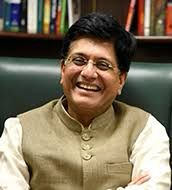
New Delhi, Sep 23 (IANS) The GST 2.0 rate cuts will benefit Tamil Nadu across multiple sectors — from traditional handlooms, handicrafts, coir and fisheries to modern industries like automobiles, electronics, renewable energy and defence, an official document said on Tuesday.
With lower GST rates, consumer goods will become cheaper, MSMEs will gain better margins, exporters will be more competitive and large industries will find it easier to expand. The impact will be widespread, from the knitwear workers of Tiruppur to the weavers of Kanchipuram, the coir artisans of Pollachi, the fisherfolk of Nagapattinam, the auto workers of Sriperumbudur, and the engineers of Avadi, the official statement said.
Tamil Nadu’s textile industry is not only one of the largest in India but also one of the most labour-intensive. It sustains millions of livelihoods across districts such as Tiruppur, Erode, Karur, Salem and Kanchipuram, and contributes significantly to India’s exports.
The GST cuts to 5 per cent or nil across textiles, handicrafts, coir, food and fisheries will lower consumer prices by 6–11 per cent, leading to increased demand and higher production. Traditional sectors like Kanchipuram silk, Bhavani rugs, Swamimalai icons and Manapparai murukku to gain renewed competitiveness.
Similarly, large industries in automobiles, renewable energy, electronics and defence to benefit from lower input costs. Around 10 lakh jobs in Tiruppur knitwear, 22 lakh in automobiles, and 10.5 lakh fisherfolk will see a see a direct beneficial impact, the statement explained.
Tiruppur, known as the “Knitwear Capital of India,” alone employs about 10 lakh people and contributes nearly 90 per cent of India’s cotton knitwear exports, worth around $1 billion. The city has more than 1,300 exporting units, supplying garments to large global retailers.
With GST reduced from 12 per cent to 5 per cent on low-value apparel, embroidery and accessories, costs are expected to fall by 6–11 per cent. This helps MSMEs improve their margins, makes exports to the US and Europe more competitive, and ensures that India retains its edge in global knitwear markets, the statement pointed out.
Tamil Nadu’s handicrafts are world famous for their artistry, cultural symbolism and heritage value. They provide employment to thousands of families, many of whom pass down traditional skills through generations who stand to benefit from the GST rate cuts.
Tamil Nadu has a marine fisherfolk population of 10.48 lakh spread across 14 coastal districts. With strong domestic demand and exports worth Rs 6,957 crore in 2022–23, the sector is vital to the state’s economy. With GST on processed fish and seafood reduced from 12 per cent to 5 per cent, products will be 6–7 per cent cheaper leading to a surge in demand and higher sales.
Beyond primary sectors, Tamil Nadu’s strong industrial base will see wide-ranging benefits.
Thousands of MSMEs in Tamil Nadu produce pumps, small engines, sprinklers and irrigation tools. With GST reduced from 28 per cent to 18 per cent on many parts and from 12 per cent to 5 per cent on sprinklers and hand pumps, prices of equipment will fall by 6–8 per cent. This will help small and marginal farmers adopt modern irrigation systems, improving farm productivity.
In 2023, Tamil Nadu accounted for 40 per cent of India’s EV production and employed 22 lakh people in its auto sector. With GST on vehicles and parts reduced from 28 per cent to 18 per cent, the effective tax load will be lower by about 8 per cent. This will make automobiles more affordable for domestic buyers and improve cost competitiveness for manufacturers and exporters.
The state has a renewable energy capacity of 34,700 MW, more than half of its total energy mix. This includes 10,500 MW of wind and 7,360 MW of solar. With GST on renewable devices and parts cut from 12 per cent to 5 per cent, project costs will be reduced by 6–7 per cent, improving economics for developers and supporting Tamil Nadu’s green energy targets.
Electronics and new-age technologies are also expected to benefit significantly from GST rationalisation.
Besides, Sriperumbudur, Oragadam, Kancheepuram, and Krishnagiri have emerged as major electronics hubs. With GST on TVs and monitors reduced from 28 per cent to 18 per cent and on silicon wafers from 12 per cent to 5 per cent, consumer prices will come down and MSMEs in the supply chain will see reduced input costs. This strengthens Tamil Nadu’s growing ESDM exports.
GST on drones has been cut to 5 per cent from the earlier 18 to 28 per cent. This makes them 13–18 per cent cheaper, accelerating adoption in agriculture, defence, logistics, mapping and infrastructure monitoring. Tamil Nadu already houses several drone startups in Chennai, Hosur and Coimbatore, making it well-placed to lead this emerging sector.
Tamil Nadu hosts one of India’s strongest defence and aerospace corridors, with major facilities in Avadi (Chennai), Coimbatore, Trichy and Salem. Together, these units, along with a growing network of MSMEs, make Tamil Nadu a critical contributor to India’s defence preparedness.
–IANS
sps/na




